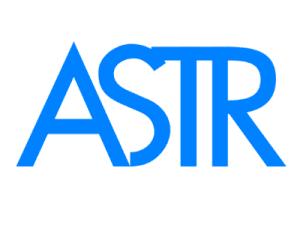Migraine Headaches: Causes, Symptoms, and Effective Treatments
Migraine Headaches: Causes, Symptoms, and Effective Treatments
Migraine headaches are a common symptom of neurological disorders. They are a chronic and recurring health condition affecting around 30% of those who suffer from headaches [1]. Migraines can significantly impair focus, concentration, and productivity. While over-the-counter painkillers and home remedies may offer short-term relief, achieving long-term pain relief requires therapies that address the root causes.
Definition of Migraine Headaches
Migraines are characterized by unilateral headaches that range from mild to severe. The episodes have multiple contributing factors, and women after puberty are more likely to experience migraines than men. Migraines are classified as acute or chronic depending on whether they occur for fewer than 15 days or more per month, respectively. They are a major contributor to the global disease burden and can significantly impact an individual’s work performance [2, 3].
Causes and Triggers of Migraine Headaches
The causes of migraine headaches are multifactorial. Many people who suffer from migraines have a genetic predisposition, while environmental factors often act as triggers. The following are common triggers listed by prevalence [4]:
- Stress, anxiety, and other mental health conditions.
- Hormonal changes, particularly in women, which are more pronounced during pregnancy and menstruation, often triggering migraines.
- Sudden or significant changes in sleep patterns and appetite.
- Weather changes, affecting about 53% of migraine patients.
- Exposure to bright or flashing lights.
- Excessive use of tobacco and alcohol.
- Certain foods and ingredients that can cause migraines in sensitive individuals.
- Intense physical activity, such as exercise.
- Sexual activity, which triggers migraines in approximately 5% of sufferers.
- Compromised blood flow to the brain, which is a significant concern for those with migraines. Poor posture, especially forward bending, can restrict blood flow to the brain, triggering headaches. Additionally, fascial restrictions and spasms in the vertebral artery can also contribute to migraines. Reducing exposure to environmental triggers can help lower the frequency and intensity of migraine headaches.
Symptoms of Migraine Headaches
Migraine symptoms can last from several hours to three days and may include [5]:
- Unilateral headache ranging from mild to severe.
- Nausea and dizziness.
- Vomiting.
- Pale or dull skin.
- Sensitivity to sound (hyperacusis) and light (photosensitivity) during attacks.
- Blurred or impaired vision.
- Sensitivity to odors.
- Loss of appetite.
Types of Migraine Headaches
Migraines are primarily classified into two categories: those with aura and those without. An aura is a set of sensory disturbances that occur before or during a migraine attack [6].
Migraine With Aura
About one-third of migraines fall into this category. Aura symptoms are reversible and can include visual, sensory, speech, motor, retinal, or brainstem-related disturbances. Visual symptoms may involve blind spots, blurred vision, temporary vision loss, and wavy lines in the visual field.
Migraine Without Aura
This type constitutes the majority of migraines. Symptoms include nausea, vomiting, irritability, low blood pressure, dark circles under the eyes, and heightened sensitivity to light and sound.
Understanding the Normal Healing Cycle
To understand effective treatments for migraines, it is essential to know the normal healing cycle, which includes three stages: inflammation, proliferation, and maturation.
Fase infiammatoria
During this stage, inflammatory cells are recruited to the injury site, causing redness, swelling, pain, and warmth. The main goal is to eliminate the cause of inflammation.
Fase di proliferazione
This stage is characterized by reepithelialization and the formation of new blood vessels. Fibroblasts deposit collagen fibers to support the healing process.
Fase di maturazione
The maturation stage is the final phase of the healing cycle, where the process is resolved. In cases of chronic inflammation, the healing cycle may alternate between the inflammatory and proliferative stages without reaching full resolution.
Ineffective Treatments for Migraine Headaches
Various home remedies and clinical techniques are commonly used to relieve migraine symptoms, but these often only provide short-term relief and do not address the inflammation or proliferation stages. Ineffective treatments include applying ice or heat, electrical stimulation, massage, foam rolling, muscle stretching, and strength exercises during the inflammation stage. Some of these treatments may even aggravate migraine symptoms.
Effective Treatments for Migraine Headaches
Though migraine medications can offer temporary relief, they may cause rebound headaches or even trigger new migraine symptoms. To effectively manage migraines, a treatment plan should focus on reducing the frequency and severity of headaches through:
- Limiting exposure to environmental triggers.
- Maintaining proper posture to ensure adequate blood flow to the brain and prevent muscle issues.
- Avoiding foods known to trigger migraines, such as alcohol and caffeine.
- Managing the inflammation stage with:
- An anti-inflammatory diet.
- Correcting vitamin and mineral deficiencies.
- Using the MagnaHeal device, which employs magnetic therapy to reduce inflammation.
- Recognizing that myofascial trigger points and fascial adhesions may also cause migraines, especially during the prolonged proliferation stage of healing [7, 8]. Resolving this stage involves:
- The A1 tool for releasing restrictions in superficial and aponeurotic fascia.
- The A3 tool for treating superficial scar tissue and muscle trigger points.
- The A5 tool for releasing deep scar tissue, muscle trigger points, and restrictions in deeper fascia layers such as the epimysium, perimysium, and endomysium.
- Consistent adherence to the treatment plan is essential for achieving the best results.
Conclusione
Migraine headaches are a disabling condition, and managing avoidable environmental triggers is crucial for reducing the frequency and severity of attacks. An effective treatment plan includes reducing trigger exposure, following an anti-inflammatory diet, using magnetic therapy, and addressing fascial restrictions, scar tissue, and trigger points.
Riferimenti
- https://www.who.int/news-room/fact-sheets/detail/headache-disorders
- https://pubmed.ncbi.nlm.nih.gov/32809622/
- https://www.ncbi.nlm.nih.gov/pmc/articles/PMC4416971/
- https://www.ncbi.nlm.nih.gov/books/NBK560787/
- https://www.ncbi.nlm.nih.gov/books/NBK279373/
- https://www.ncbi.nlm.nih.gov/pmc/articles/PMC6734209/
- https://thejournalofheadacheandpain.biomedcentral.com/articles/10.1186/s10194-018-0913-8
- https://pubmed.ncbi.nlm.nih.gov/30252294/

